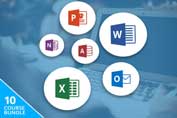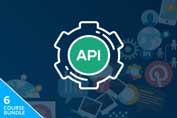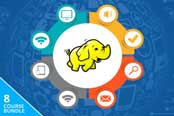
In this Neuroscience course, award-winning neuroscientist Dr. Jared Cooney Horvath will take you on a fascinating tour of the brain, and leave you with an actionable strategy for communicating more effectively and delivering better presentations.
Improve your communication skills, present more effectively and speak more confidently!
"If you improve your communication skills, I will guarantee you that you'll make 50% more money over your lifetime!" | Warren Buffett, Billionaire Investor
Course reviews are appreciated!
Udemy Free Coupon :https://www.udemy.com/the-neuroscience-of-presentations-public-speaking/?couponCode=PROMO-2019
If you are reading this, I will assume you already know why developing strong presentation and public speaking skills is so important, and that you understand how much your ability to communicate effectively will impact the success (or failure) you experience in life …
So, I’ll spare you the standard spiel and skip right to the most important question: What makes this course different?
Well, let’s start by agreeing on the purpose of a presentation ...
Unless you get some sort of odd enjoyment from speaking aimlessly to large audiences, the purpose of a presentation is to sell an idea to a group of people, and connect with them in a way that compels action.
Or, as Seth Godin says, “The only reason to give a presentation is to cause change to happen”.
And, while that sounds easy, we all know it can be exceedingly difficult. But why?
Well, in short, it’s because most people are trying to play this game without understanding the rules.
If the purpose of a presentation is to connect with people, it makes sense that the #1 most important thing you could possibly understand is people themselves: how they think, how they learn, how they make sense of reality …
And that’s exactly what this course is about -- it’s about teaching you the rules of human interaction!
Learn the fundamental truths that control how our brains work, so you can tailor your presentations to leverage these realities.
Discover what “connecting with people” actually means on a literal level, so you can start to take this important concept more seriously.
Learn how to exploit the brain’s loopholes so you can reach more people, change more minds, sell more products, raise more capital -- and experience more success!
Bottom line: if you appreciate the value of strong presentations, and you’re ready to become more conscientious about the way you communicate; about the way you connect with people and make change happen … then this one-of-a-kind course is for you.
I hope you can join me!
WHAT YOU WILL LEARN
In this course, I'll take you on a fascinating tour of the brain, and leave you with an actionable strategy for communicating more effectively and delivering better presentations.
After you finish, you'll understand how to command attention, build trust, establish authority, connect with your audience and cause change to happen!
INTEREST: What secret does Hollywood use to arrest the minds of moviegoers … and how can you leverage this time-tested technique to strengthen your next presentation?
TRUST: What simple trick has been proven to make an audience view you as better prepared, more professional, and even more likable (seriously ... people will like you more)?
ATTENTION: What is the “attention threshold”, how does it affect your audience, and what can you do to neutralize this silent attention-assassin when you speak?
ENGAGEMENT: What virtual-reality tool do the world's best communicators use to boost audience engagement (hint: it has nothing to do with the latest slideshow software)?
INFLUENCE: What makes storytelling such a potent tool for making a connection ... and why is the first story so important (get this wrong, and risk losing your audience forever)?
FOCUS: What is “contextual cueing” ... and how can you use it to free the minds of your audience from unnecessary distraction (which will otherwise co-opt their valuable attention)?
CLARITY: What is the only strategy for using complex charts and graphs during a presentation ... and what are the interest-killing consequences of getting this wrong?
CONNECTION: What is "top-down versus bottom-up" concept … and why is it the single most important thing you will learn during this eye-opening course?
Who this Neuroscience of Presentations & Public Speaking course is for:
This course is perfect for anyone who wants to reach more people, change more minds, gain more support, make a bigger impact ... and experience more (and faster) success!
Udemy Free Coupon :https://www.udemy.com/the-neuroscience-of-presentations-public-speaking/?couponCode=PROMO-2019














 PureVPN Discount Coupon Code 84% Off for Lifetime Subscription
PureVPN Discount Coupon Code 84% Off for Lifetime Subscription Scrivener Discount Coupon for Windows and Scrivener 2 for MAC - 35% Off
Scrivener Discount Coupon for Windows and Scrivener 2 for MAC - 35% Off Roadmap Planner Discount Coupon 95% Off for Lifetime Professional Plan
Roadmap Planner Discount Coupon 95% Off for Lifetime Professional Plan Bizplan Premium Discount Coupon 97% Off for Lifetime Subscription
Bizplan Premium Discount Coupon 97% Off for Lifetime Subscription